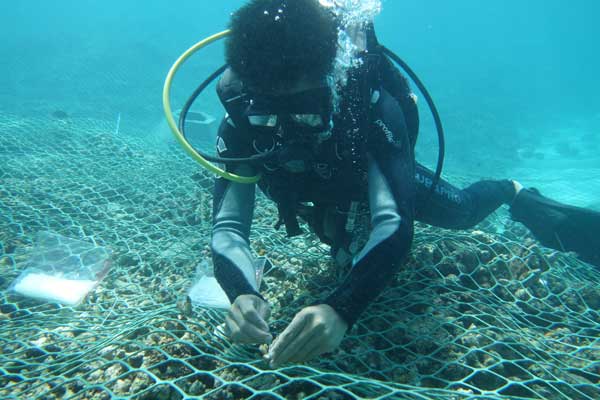Planting program helps save China's corals
By Peng Yining (China Daily) Updated: 2016-06-20 08:01
 |
|
A researcher with the Chinese Academy of Sciences transplants corals in the South China Sea. [Photo provided to China Daily] |
After years of studying coral reefs in the Xisha chain, including those on the Langhuajiao and Beijiao shoals, Chen proposed a plan to protect marine biological resources by establishing a coral reef ecosystem.
He made the proposal during this year's people's congress held in Sansha city, Hainan, which administers a number of islands, including Xisha, Zhongsha and Nansha.
"In general, the environment in the South China Sea is getting better, but the speed of self-repair is slow. Human intervention is needed," Chen said, adding that in addition to the work undertaken by the government, Sansha residents, especially fishermen, should also participate in the conservation work. "We are trying to recover a complete ecosystem; no corals equals no fish, and no fish equals no fishermen," he said.
In recent years, his group has planted more than 10,000 coral branches, and he hopes to see more than 1 million planted during China's 13th Five-Year Plan (2016-20).
A range of threats
Illegal collection for the jewelry industry poses another threat to coral reefs.
Dark-red "oxblood" corals are the rarest, most coveted and most expensive.
They are mostly found about 100 meters below the surface of the ocean.
Last year, coast guards in Guangdong province caught a group of poachers using a fishing boat to collect jewelry corals on the waters off Shantou city.
The police impounded 1.4 kilograms of oxblood with a street value of as much as 5.4 million yuan ($800,000).
Since 2014, the China Coast Guard has intercepted 140 vessels and detained 80 people suspected of illegally harvesting jewelry corals, tracking down more than 200 kg of oxblood in the process.
The country has also dedicated a huge amount of research, effort and funding to protect the vulnerable ecosystem of the South China Sea, according to Chen.
- US urged not to meddle with internal Tibet affairs
- China puts squeeze on imported TV shows and remakes
- Apple's appeal in iPhone case accepted by IP court
- China on yellow alert for rainstorms
- Disney visitors soak up a new experience
- China vows better care for children in difficulty
- Global reach targeted in Beidou drive
- Switzerland to open 9 new visa centers in China
- Planned Obama, Dalai Lama meeting protested
- Disney's Shanghai park poised to lure millions










